Welcome to Dovecote Primary School and Nursery. Thank you for sending the children smartly dressed in their school uniform. Please look at ClassDojo and Facebook for the curriculum newsletters and the latest news.
English Reading Curriculum
Reading Curriculum at Dovecote
Vision and Intent
Reading is a priority at Dovecote and is essential for pupils to succeed in their education. As a school community, we place great importance on the development of a child’s ‘reading for pleasure’ habits, reading attainment, and knowledge acquisition. Our aim is for pupils not only to build the skills needed to become effective readers, but also to develop a positive, enjoyable relationship with reading.
Our chosen phonics programme is Read Write Inc. We use a phonics-based approach to help young children crack the ‘alphabetic code’, immerse them in text to develop word-recognition skills, and support wider comprehension through knowledge, processing, and cognition. We aim to equip all children with the skills they need to become successful readers, regardless of their starting point, background, or additional needs.
We aim to meet (and when possible, exceed) the expectations set out in the EYFS Early Learning Goals and the National Curriculum, ensuring children make appropriate progress throughout their time at Dovecote. Alongside developing secure decoding, we prioritise word recognition, fluency, and comprehension so that children can grow into confident readers. We also nurture an environment that promotes reading for pleasure, enabling pupils to enjoy and value what they read. We want every child to see themselves as a reader, and we endeavour to provide every opportunity for this to happen.
Implementation
To achieve our intent from the outset, we have selected a diverse collection of books featuring characters from a range of cultures and backgrounds. Our reading sessions are designed to meet the needs of all learners through interactive approaches and inclusive activities. Children continue to develop their understanding of books, language, and how reading works. We also actively involve parents in the reading process and provide resources to extend learning at home. Our approach is flexible, with continuous assessment and adaptation to ensure our reading environment remains responsive to pupils’ needs.
The explicit and direct teaching of word reading begins in the Early Years with phonics. Children take part in daily phonics sessions involving speaking, listening, and spelling activities matched to their needs. Teachers use continuous assessment to ensure children receive appropriate scaffolding and challenge. This approach supports the development of automatic and fluent reading. Across all year groups, children are read to every day to build a love of reading and provide opportunities for book talk and comprehension. Regular assessment and monitoring enable precision teaching and identification of pupils who may require additional support before they fall behind.
From Year 3, children take part in whole-class reading sessions four times per week. Pupils who still require support with decoding continue to access phonics interventions. These whole-class reading sessions follow a weekly structure: beginning with vocabulary exploration to support understanding of the text, followed by fluency practice through reading aloud and partner work to develop tone, expression, and confidence. On day three, children focus on a specific reading skill (such as retrieval, summarising, predicting, or inferring) and finally apply their understanding through a range of comprehension questions.
Our curriculum of class novels provides children with challenging texts that explore a range of themes and big ideas, reflect the realities of the wider world, and build cultural capital. Books are carefully selected to link with termly History and Geography topics, encouraging cross-curricular learning and deeper connections.
We also place significant emphasis on developing an ethos of reading for pleasure. Research shows that reading enjoyment is more important for a child’s educational success than their family’s socio-economic status, and it is the single most important indicator of future success (OECD, 2002). Staff champion the power of reading and speak openly with pupils about their own reading habits and attitudes. Reading is highly visible across the school, and our Reading Ambassador programme provides peer role models to further promote reading for pleasure.
Impact
Impact is measured through lesson visits, pupil voice, work scrutiny, formative and summative assessment, and data analysis. Leadership meetings are held weekly to evaluate impact, reflect on children’s progress, and identify next steps.
PHONICS

We teach phonics through the RWI scheme starting in nursery, where they are exposed to characters and visual representations of letters, play lots of listening games and meet Fred the Frog.
In Reception, the children make the best start by learning all the set 1 sounds and playing lots of Fred Games, before being assessed on which sounds they have retained, their ability to orally blend and their ability to blend sounds to read word cards. They are then taught phonics in smaller groups and assessed throughout the year so that they are reading at the correct level and pace for them, moving through the set 1 and set 2 sounds and taking home 'Ditties' 'Blending books or RWI story books when they are ready.
In KS1, the children are assessed and grouped according to their reading ability. They work their way through the Set 2 and Set 3 sounds, before moving on to comprehension, spelling and grammar. They take home RWI story books to support their reading at home.
Year 3 children, who still need to access the RWI phonics groups alongside year 1 and 2 children. KS2 children who still need extra support with their reading access the RWI 'Fresh Start' intervention to help them to read and access their learning.
Please click the links to watch videos to support your knowledge of what RWI phonics is and how you can support your child with their reading at home.
Reading
Through RWI the children will learn to read effortlessly, so that they can put their energy into understanding what they are reading.
The children will learn 44 sounds and the corresponding letter/letter groups, using simple picture prompts. The children learn to read real and ‘nonsense’ words by blending sounds together. These sounds can be stretchy and bouncy sounds.
Here are the sound mats that children have available in class. These are useful to refer to at home when reading and writing.
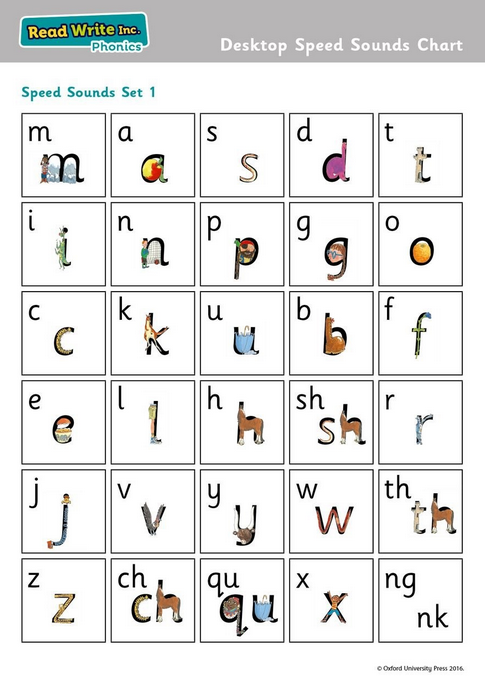

Blending
Children learning to read words by blending the letter/sounds that are in the speed sounds sets. You can help your child to read words by sound-blending (Fred Talk)
e.g. c-a-t = cat
sh-ee-p = sheep
In RWI we use ‘Pure sounds’. This means removing the ‘uh’ from the sounds. Please click the link above ('How to say the sounds') to hear how each sound should be said correctly.
Spelling
Fred Talk helps children convert words into sounds so that they can easily spell them one sound at a time.

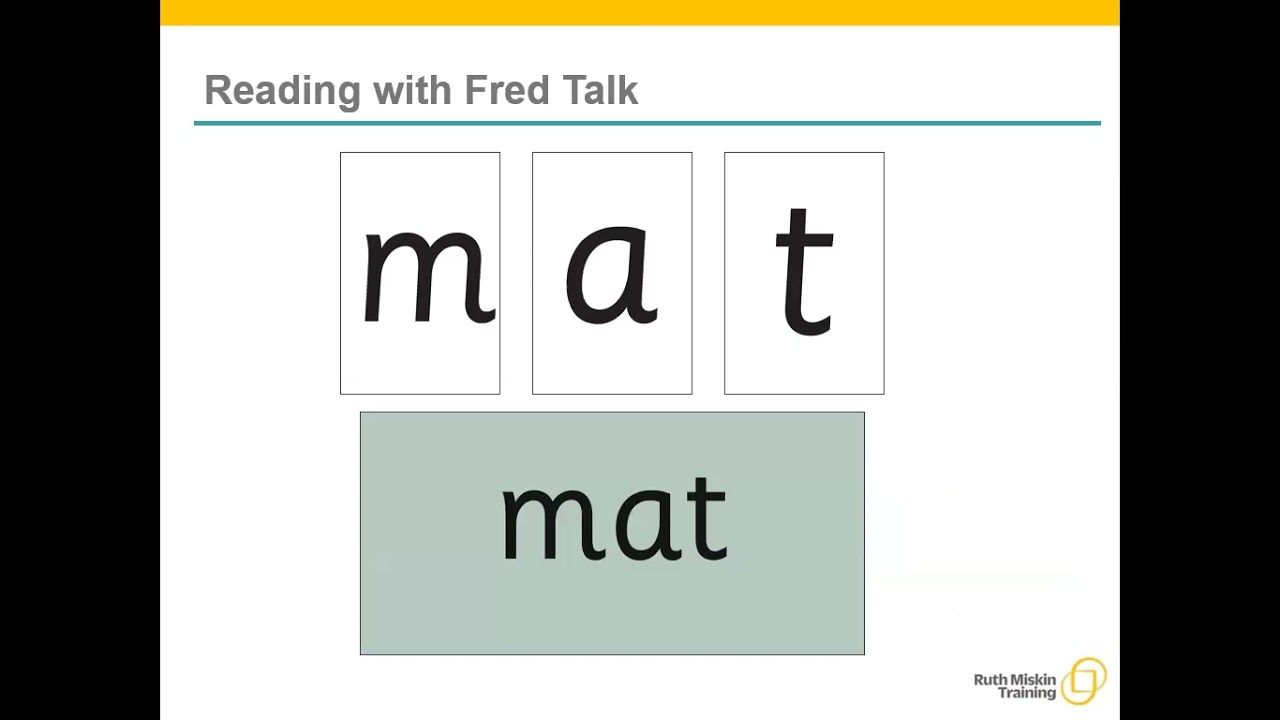
Formation prompts
Each letter has a verbal prompt to support the children in forming them correctly. It is important that children don't learn incorrect formations, as these can be difficult to unlearn and affect their handwriting and presentation moving through school.
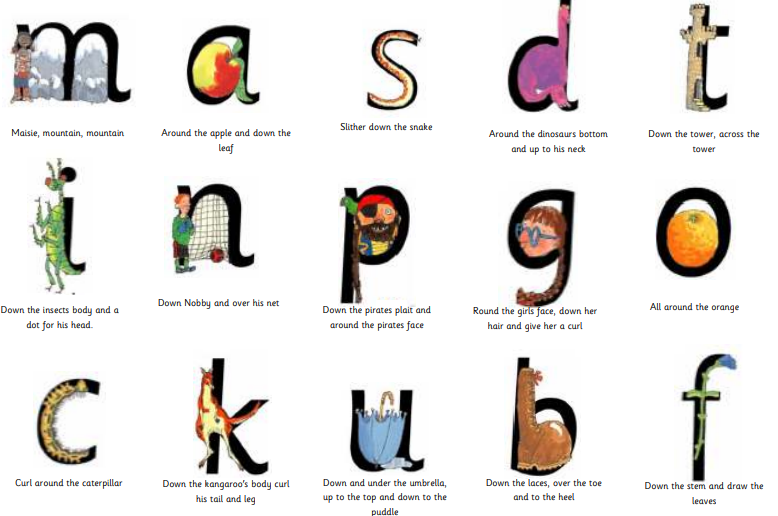
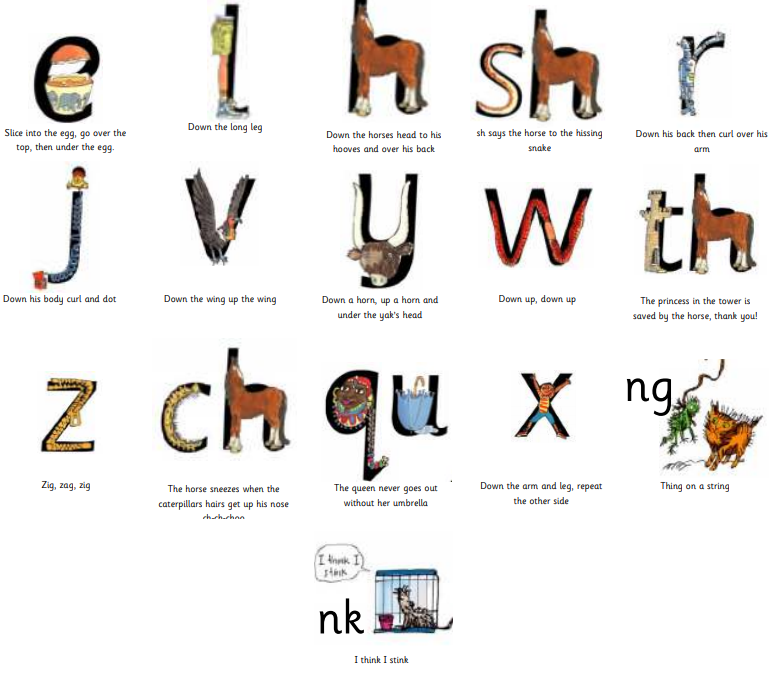
Set 2 and Set 3 sounds have phrases linked with them to support children to visualise and remembering the letters that match. Set 3 teaches alternative spelling choices for the same sounds. It is important that children are secure in their set 2 sounds before learning set 3 sounds.
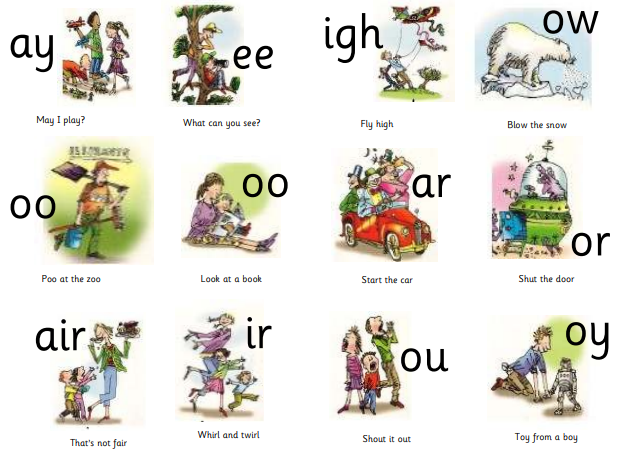
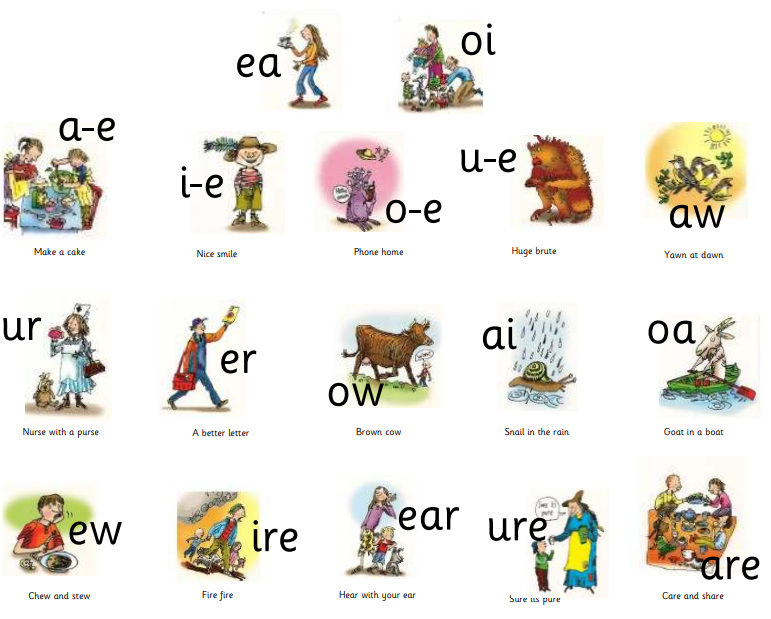

Oxford Owls is a great resources to support learning at home. It is free to sign up, but you must create an account to access the resources.
Other useful websites for learning phonics at home are:
The Phonics Screening Check
In Year 1, your child will take part in a phonics screening check. It is a statutory check, and the school must report the results to both parents and the government. It takes place in June, and you will receive a letter with your individual child's result.
Part of the phonics screening is to check that children can phonetically blend sounds in nonsense words. Here is an example below.
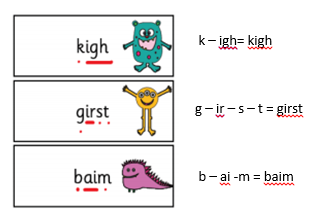
Phonics games for home and school
